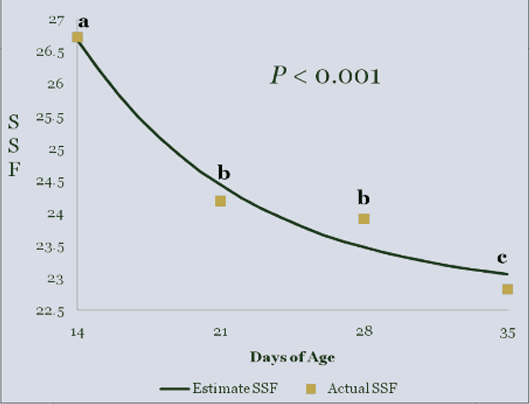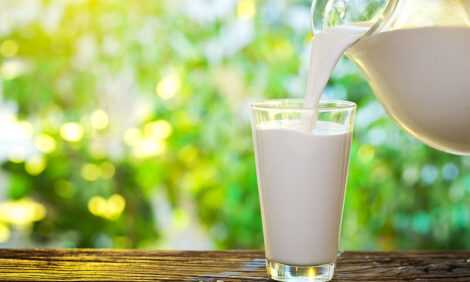



Beef From Market Cows: Palatability
The first of this three part feature from the Center for Research & Knowledge Management in the Department of Research, Education & Innovation at the National Cattlemen’s Beef Association looks at the palatability of beef from market cows.Palatability of Beef from Market Cows
Beef palatability has been unanimously defined by tenderness, juiciness and flavor. The majority of market- cow beef presents challenges to the consumer's palate. When compared to conventionally produced beef resulting from grain-finished steers and heifers, the lion's share of beef produced from market cows is tougher, leaner and less juicy and has an increased prevalence of undesirable flavors. As a result, the majority of market-cow beef is merchandised as a ground-beef product that has commonly been blended with fat trimmings from conventionally produced steers and heifers or fat trimmings from fed (white-fat) cows. However, as mentioned previously, processors are utilising ways to improve the palatability of cow products and are marketing higher-quality, whole- muscle cuts at a premium.
Factors influencing Tenderness
The most significant factor adversely influencing the tenderness of market cow beef is animal age at the time of harvest. For over 30 years, it has been well documented that advancements in physiological maturity of beef carcasees are detrimental, particularly from the standpoint of tenderness (romans et al., 1965; walter et al., 1968; berry et al., 1974). Many studies have explained that the amount of heat-labile (soluble) collagen in beef muscle decreases as the animal matures and is responsible for age-associated toughening (goll et al., 1964; hill, 1966; herring et al., 1967). Decreased tenderness in whole-muscle cuts resulting from mature cows has been linked to elevated levels of insoluble intramuscular collagen (boleman et al., 1996; cranwell et al., 1996b; schnell et al., 1997). With the vast majority of cows receiving a maintenance diet for their entire reproductive life, collagen tissue matures and gradually stabilises to an insoluble, heat-resistant form causing a reduction in the amount of collagen that may be solubilised during subsequent cooking. Realimentation, or feeding cows at a level that exceeds maintenance requirements, causes increased protein synthesis and the turnover of collagen and is the most successful production tool to increase collagen solubility in mature cows.
Considering that a large percentage of cows harvested have minimal fat covering and are relatively small in size and mass, specifically non-fed market cows, cold shortening is another factor that can adversely impact the tenderness of cow products. Cold shortening occurs when muscle is chilled too rapidly following harvest and results in muscle fiber shortening and extreme toughening. Due to the absence of fat on the exterior of muscles, lean cows are especially susceptible to the effects of cold shortening. The exterior fat on fed and heavier-conditioned cull cows provides an insulating effect to protect muscles from the effects of cold shortening. To complicate things further, due to elevated concerns in regard to food safety issues in ground beef, most cow-harvest facilities chill carcasees very rapidly and utilise very low cooler temperatures which contribute to the incidence of cold shortening.
In addition to feeding cows, other post-harvest management practices have been shown to be effective to improve the tenderness of beef resulting from market cows. Postmortem aging has been widely accepted as an effective means of improving the tenderness of beef from steers and heifers (gruber et al., 2006) and has also been shown to improve the tenderness of market- cow beef (diles et al., 1994 and woerner, 2009). The shear force (sf) values of the longissimus (lm) muscle of cow beef have been shown to rapidly decrease between 14 and 21 days postmortem, stabilise between 21 and 28 days, and then decrease again between 28 and 35 days postmortem (woerner, 2009; figure 4).
Woerner (2009) provided evidence that the lm of cows aged differently than those from youthful beef animals (youthful beef muscle aged in a more linear fashion), and concluded that initial tenderness improvement resulted from improved myofibrillar tenderness and secondary tenderness improvement resulted from the ability of aging to degrade intramuscular collagen. High-voltage electrical stimulation also has been shown to improve the tenderness of market-cow beef (mckeith et al., 1980 and boleman et al., 1996) and has been shown to increase the frequency of cow lm steaks that are acceptable in tenderness to consumers (boleman et al., 1996). Additionally, calcium chloride injection has been show to effectively increase the tenderness and palatability ratings of cow beef (morgan et al., 1991 and diles et al., 1994).

Factors influencing Flavour Desirability
The two major factors that influence the flavor of beef from market cows are animal diet and animal age. US consumers prefer the flavourof beef products produced from grain-finished, youthful animals. On the contrary, the vast majority of US consumers find that the flavour of grass- finished, mature beef is less desirable. Multiple studies have shown that beef from cattle finished on low-energy diets with high-forage contents has undesirable flavour(brown et al., 1979; schroeder et al., 1980; dolezal et al., 1982; melton et al., 1982; hedrick et al., 1983; larick et al., 1987), and smith et al. (1983) showed that as maturity increases, flavourdesirability decreases. These findings help explain why consumers find beef from market cows to be less desirable.
Bruce et al. (2005) reported that more than 40 per cent of the variation in beef flavourbetween grass- and grain-finished beef is accounted for by diet. The diet of the ruminant animal is known to influence the composition of fat in the meat. In market cows, fat colour serves as an excellent indication of the level of grain feeding that an animal has received prior to harvest (schnell et al., 1997; stelzleni et al., 2007; woerner, 2009). Therefore, market cows are commonly segregated using fat colour as an indication of quality and value. Concentrate feeding of cattle is generally associated with white carcase fat colour (white fat), whereas grass-finishing is generally associated with yellow carcase fat colour (yellow fat). While fat colour (yellowness) is dependent upon multiple intrinsic and extrinsic variables including biological type, breed type and chronological age, animals that have regularly consumed a diet consisting primarily of forages produce carcase fat with increased yellowness. This yellowness is predominantly caused by chemical compounds in forages known as carotenoids. Carotenoids produce distinctively yellow and orange colours in beef fat. Beta-carotene is the primary pigment responsible for the development of yellow fat colour in beef (dunne et al., 2008). Specifically, as fat colour transitions from white to yellow or orange, the incidence of consumer dislike and off-flavors increases (hilton et al., 1998; hodgson et al., 1992; stelzleni et al., 2007; woerner, 2009).
Feeding market cows a high-energy, grain-based diet for an extended period prior to harvest, and consequently transitioning fat colour from yellow to white, is an effective means of reducing the incidence of off-flavors in cow beef and thereby improving overall palatability (hilton et al., 1998; hodgson et al., 1992; stelzleni et al., 2007; woerner, 2009).
Further Reading
| - | You can view the full report by clicking here. |


